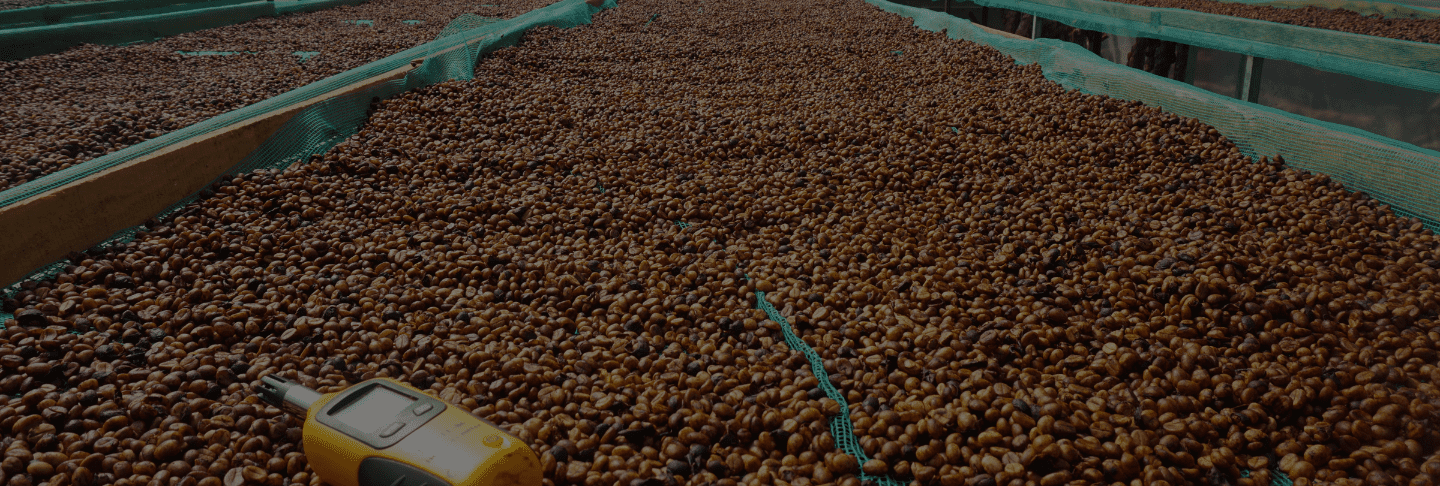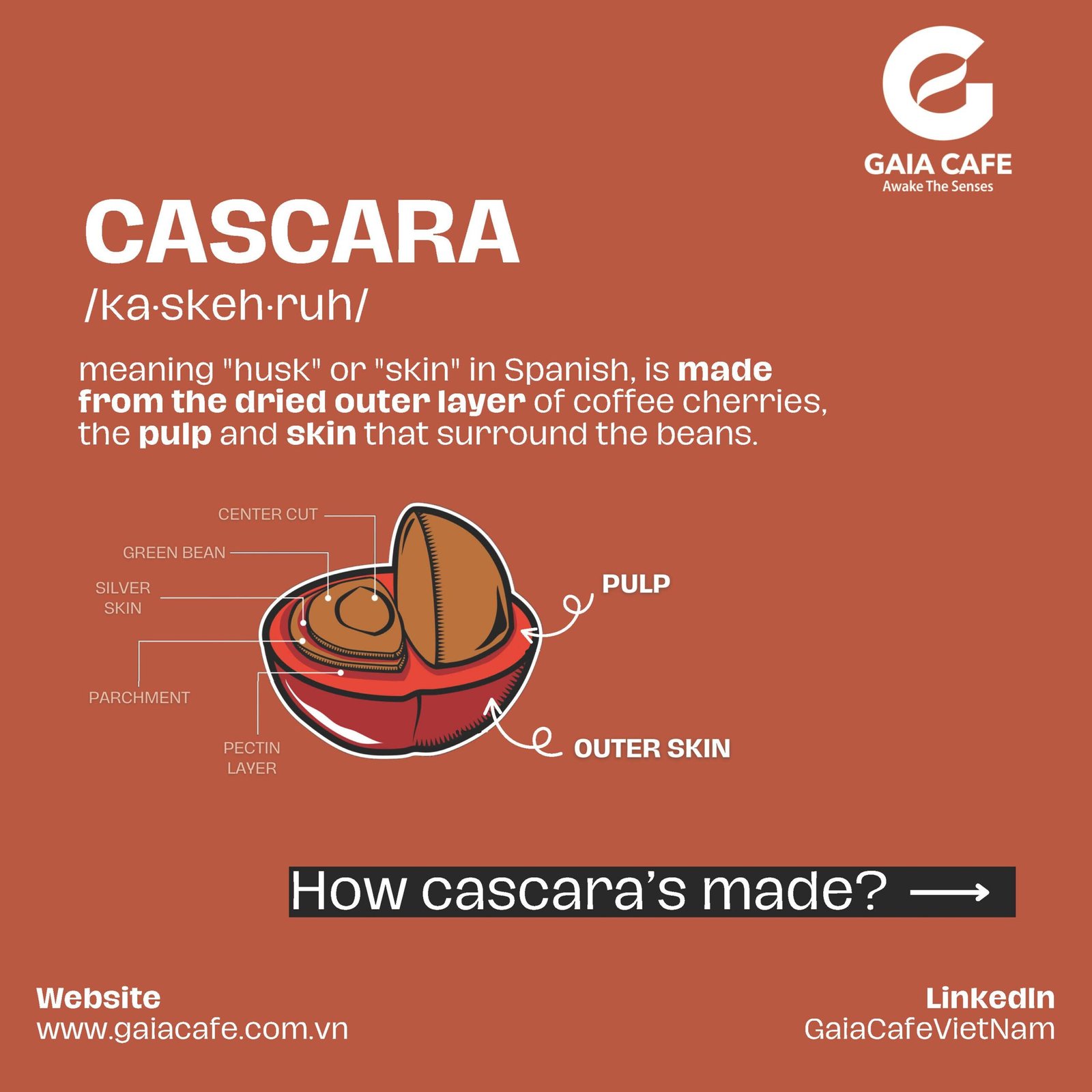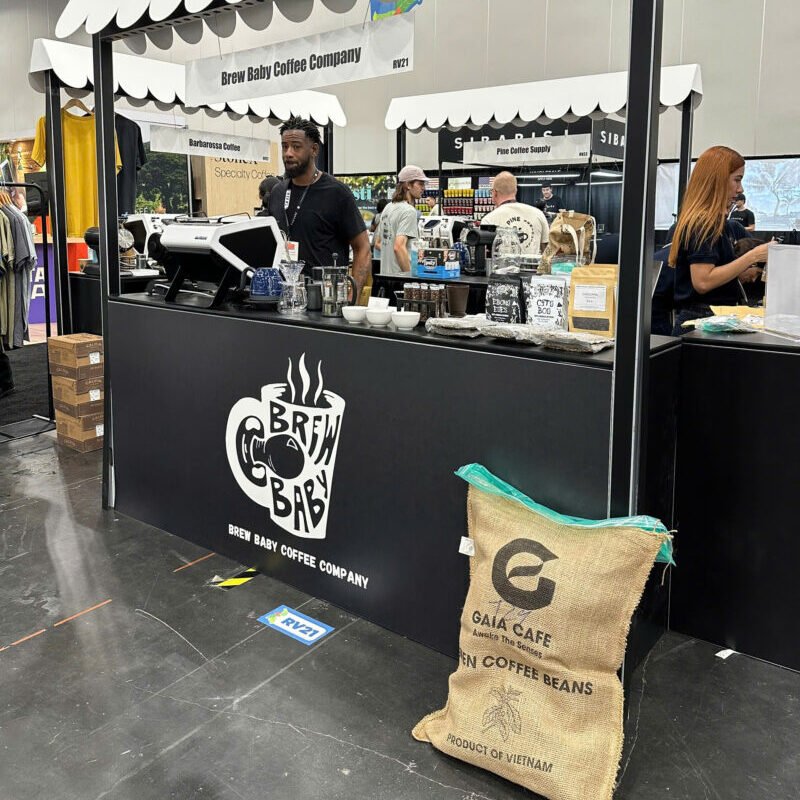
Honey Coffee Process – Part 1. What Are Processing Methods?
Honey Coffee Process
First off, no, honey coffee processing does not have any honey in it. And yes, it does help your coffee cup taste sweeter. But it has nothing to do with adding flavors or putting additives into your coffee.
Honey coffee actually refers to the modern coffee production process in which the coffee cherries are transformed into green beans ready for roasting later.
It is a hybrid method between washed and natural processing methods, combining the best characteristics of both and thus capable of producing a heavier-bodied, sweeter-tasting, and more complex cup of coffee.
What do you mean by processing methods? My coffee comes from the coffee beans, no?
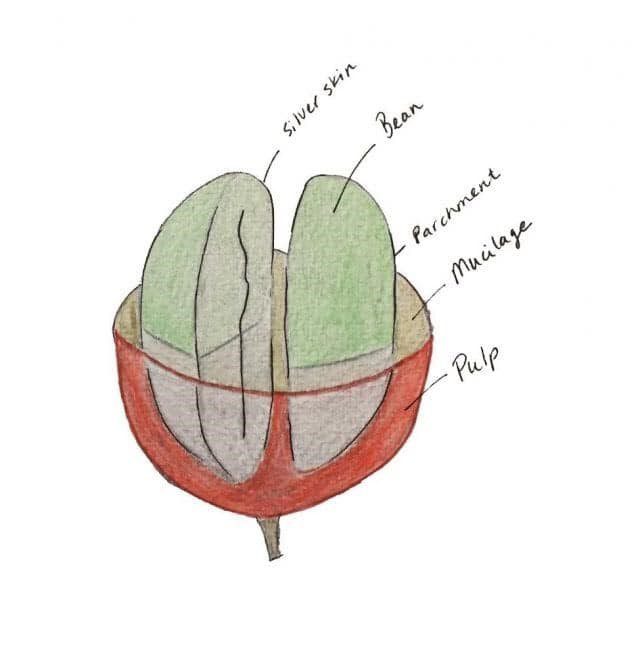
Sure, your coffee comes from them dark, round, sexy coffee beans, indeed. Nevertheless, in order for the coffee trees to transform into the dark caffeinated beverage you religiously consume every day, there are quite few more intricate steps involved. The rounded coffee beans you commonly see are not really beans; they are in fact the seeds of juicy red (sometimes green and yellow) coffee cherries. To get to the beans inside, we need to remove the outer pulp and mucilage layers, and then dry the beans inside to around 11 to 12 percent moisture content.
Figure 1. illustrates the anatomy of a fresh coffee cherry. Mucilage is the fleshy, fruity, kind of sticky layer of the coffee cherry, located between the outer skin and the parchment layer surrounding the inner seeds.
If 100% of the pulp and mucilage layers are removed using water before drying, it is called washed process; and if the entire coffee cherries are dried with those layers intact then removed later, it is called natural process. Figure 2 helps us visualize the key differences between these three processing methods: natural vs. honey vs. washed.

So where does the name “honey coffee” come from if there is no honey in it?
Honey process lies somewhere in the middle between washed and natural – the outer skin is removed but a portion of the viscous mucilage remains on the beans when dried.
During this drying stage lasting several weeks, the mucilage layer containing tons of sugars and minerals[1] will break down, ferment, and turn into a sweet, sticky substance coating around the beans (Figure 3). This amber-colored, syrupy-like substance resembles and smells much like honey; hence the name “honey coffee.” In Costa Rica from where the method and the name originated, its Spanish name is “miel” process[2], which translates into “honey” process in English.
And to be honest, “honey coffee” sounds much more appealing and appetizing, as I would have zero desire to try something named “mucilage process” coffee no matter how good the coffee actually tastes. Don’t you agree?

In short, honey coffee has zero honey in it. And it does not necessarily mean all honey coffee would have a honey-like sweetness to its taste. But the coffee taste profile will have a more rounded mouthfeel, some sweet aftertaste and milder acidity.
It is well accepted by both the coffee industry and scientists that processing affects the cup profile. A generality on perfectly pampered and accomplished processing on farms where hand-harvest methods are used is that going from washed to pulped naturals to full naturals creates an increasing intensity of sweetness, fruitiness (ferment to some), acidity, and body. Some people suggest that the coffees become increasingly complex through this progression.[3]
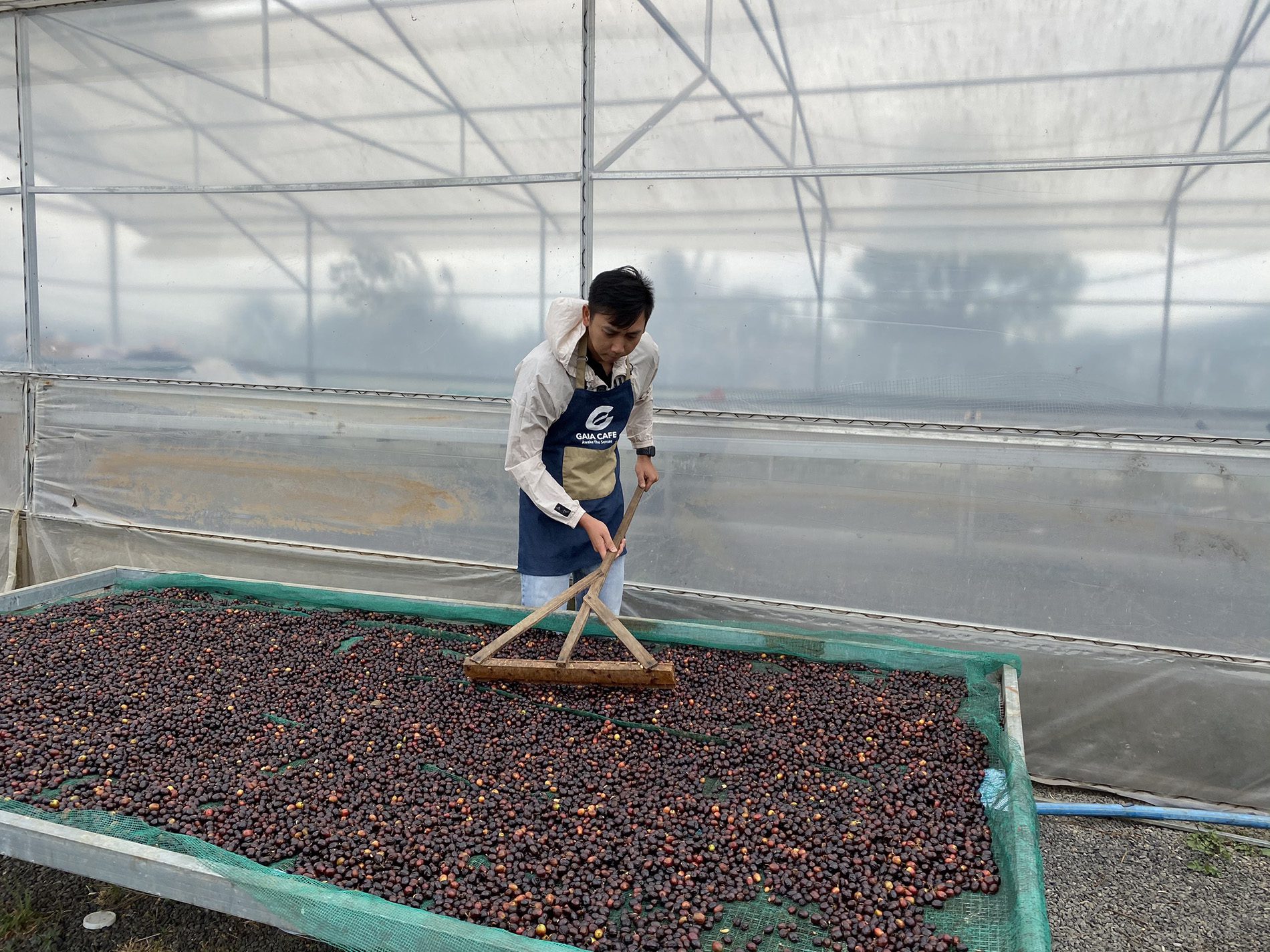

The effects of processing method on the flavor profile of your coffee cup are prominent

(End of part 1. To be continued.)

References
[1] Pérez-Sariñana, Bianca Yadira & León-Rodríguez, Antonio & Saldaña-Trinidad, Sergio & Sebastian, Pathiyamattom-Joseph. (2015). Optimization of Bioethanol Production from Coffee Mucilage. Bioresources. 10. 4178-4190. 10.15376/biores.10.3.4326-4338. https://www.researchgate.net/figure/Chemical-Composition-of-Coffee-Mucilage_tbl1_277324050
[2] 2. Colonna-Dashwood, M. (2017, October 3). Coffee Dictionary: An AZ of coffee, from growing & roasting to brewing & tasting (01 ed.). Chronicle Books. AND 3. Kingston, L. (2015, April 14). How to Make Coffee: The Science Behind the Bean (Illustrated). Abrams Image.
[3] 3. Kingston, L. (2015, April 14). How to Make Coffee: The Science Behind the Bean (Illustrated). Abrams Image.
Please kindly remember to credit us, the diligent writers at Gaia Café, when you use our materials in your writing or for your research.


